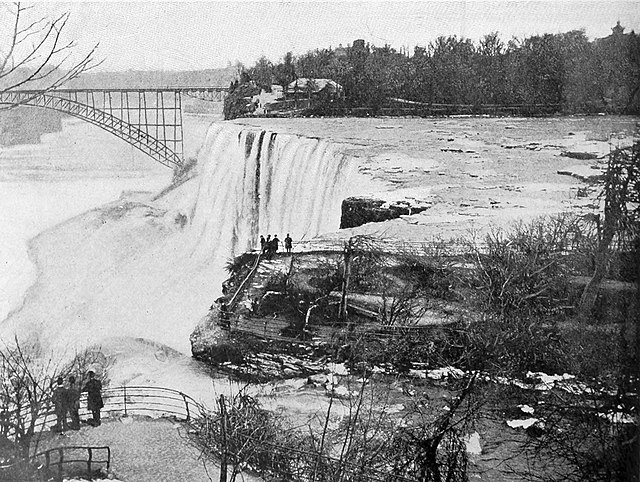An East View of the Great Cataract of Niagara
An East View of the Great Cataract of Niagara is a historic watercolour of Niagara Falls painted on site by Thomas Davies in 1762. It was the first eyewitness painting and the first accurate view of the falls.
An East View of the Great Cataract of Niagara
An East View of the Great Cataract of Niagara (c. 1763–1768) – Engraving by J. Fougeron
Niagara Falls from Above (c. 1766)
Niagara Falls from Below (c. 1766)
Niagara Falls is a group of three waterfalls at the southern end of Niagara Gorge, spanning the border between the province of Ontario in Canada and the state of New York in the United States. The largest of the three is Horseshoe Falls, which straddles the international border of the two countries. It is also known as the Canadian Falls. The smaller American Falls and Bridal Veil Falls lie within the United States. Bridal Veil Falls is separated from Horseshoe Falls by Goat Island and from American Falls by Luna Island, with both islands situated in New York.
Niagara Falls seen from the Canadian side of the river, including three individual falls (from left to right): American Falls, Bridal Veil Falls, and Horseshoe Falls.
Canadian Horseshoe Falls at right
Damage from wind and ice on Goat Island, 1903
American and Bridal Falls diverted during erosion control efforts in 1969








